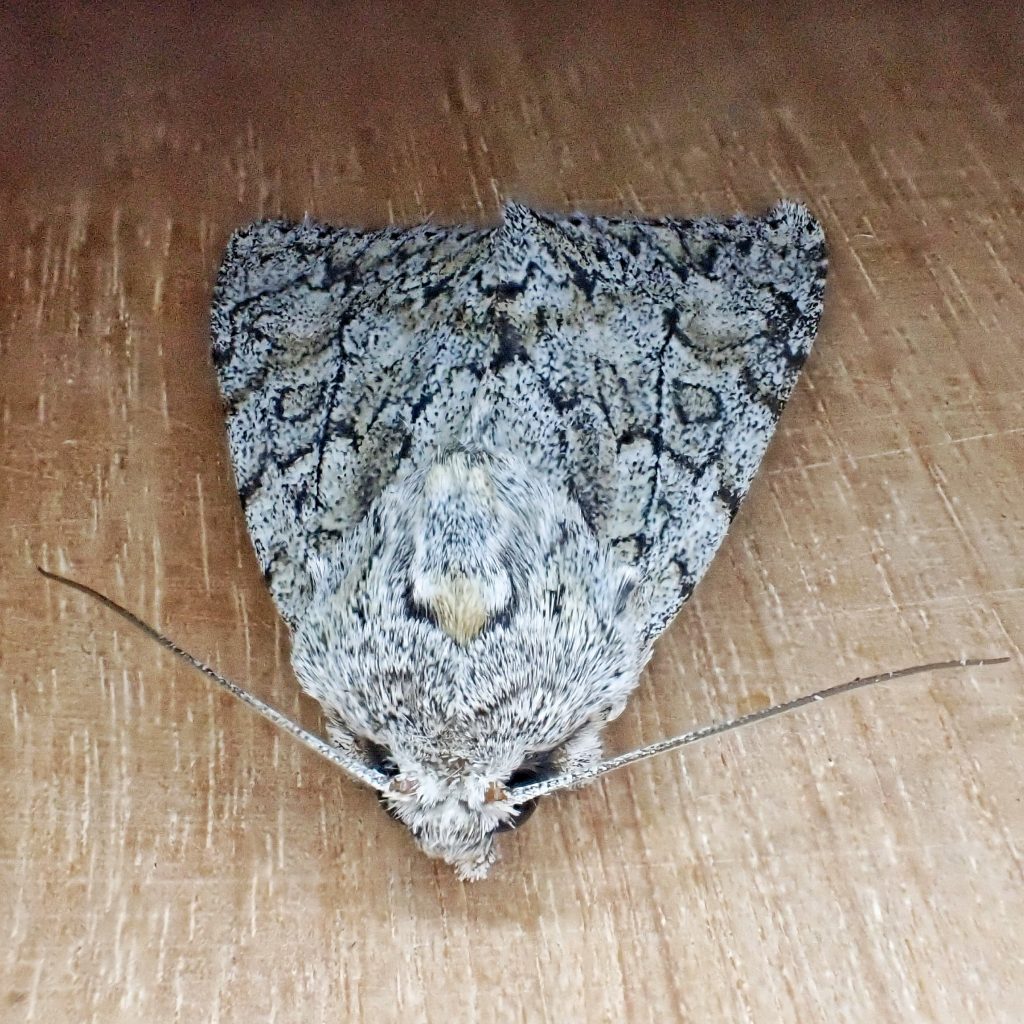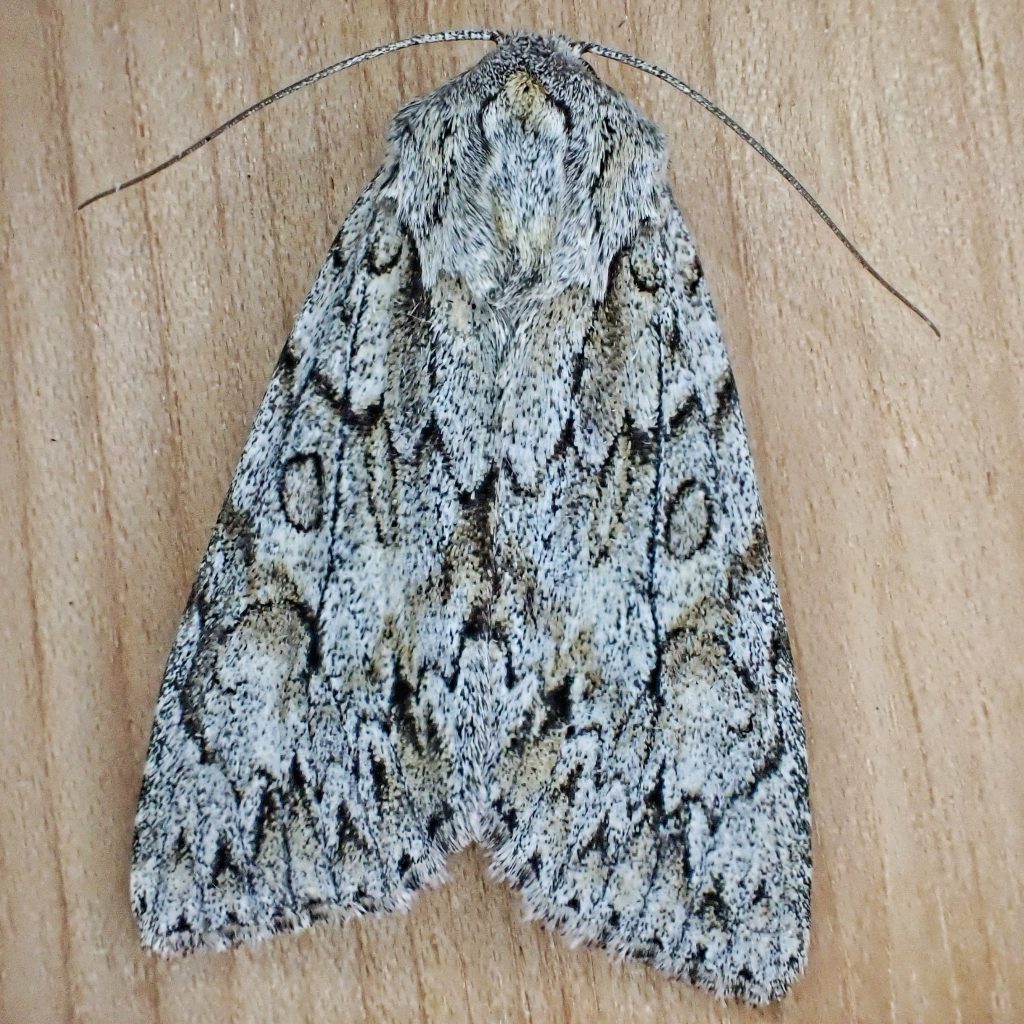
This handsome noctuid moth was a new one for me, although I’m slightly surprised that I hadn’t seen it before since I’m no stranger to late summer mothing in areas with alders. It came to my lights in a vernally wet meadow near South Prairie, Skamania County, Washington. The area has a wide variety of different plants, since it is in a transition zone between western and eastern Cascades at about 3,000’ elevation, and next to a stream. There were only about a dozen species of moths that visited me that night, and not large numbers of any of them except Gabriola dyari. I attributed that to the fact that, up in the mountains, the end of August is actually fall.
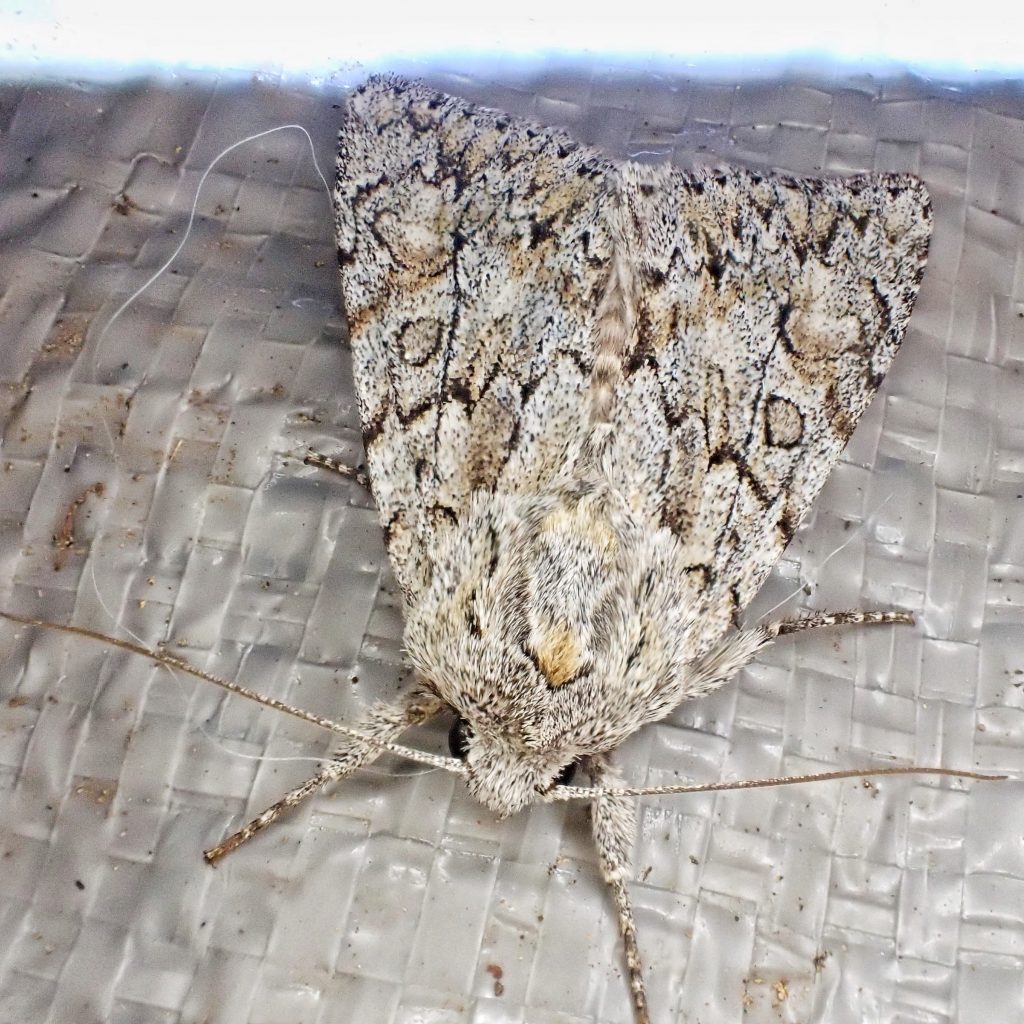
Description-Medium to large (fw length 19-23mm) bright blue grey moth with speckled forewings and patches of brown; orbicular and reniform spots distinct, outlined in black; transverse lines jagged, and subterminal line a series of arrowheads
Similar species–Andropolia contacta is darker, duller grey, and lacks brown patches; A. theodori is larger, and has smaller, less distinct orbicular spot; Polia spp. have smoother subterminal lines, and their eyes are covered with fine hair.
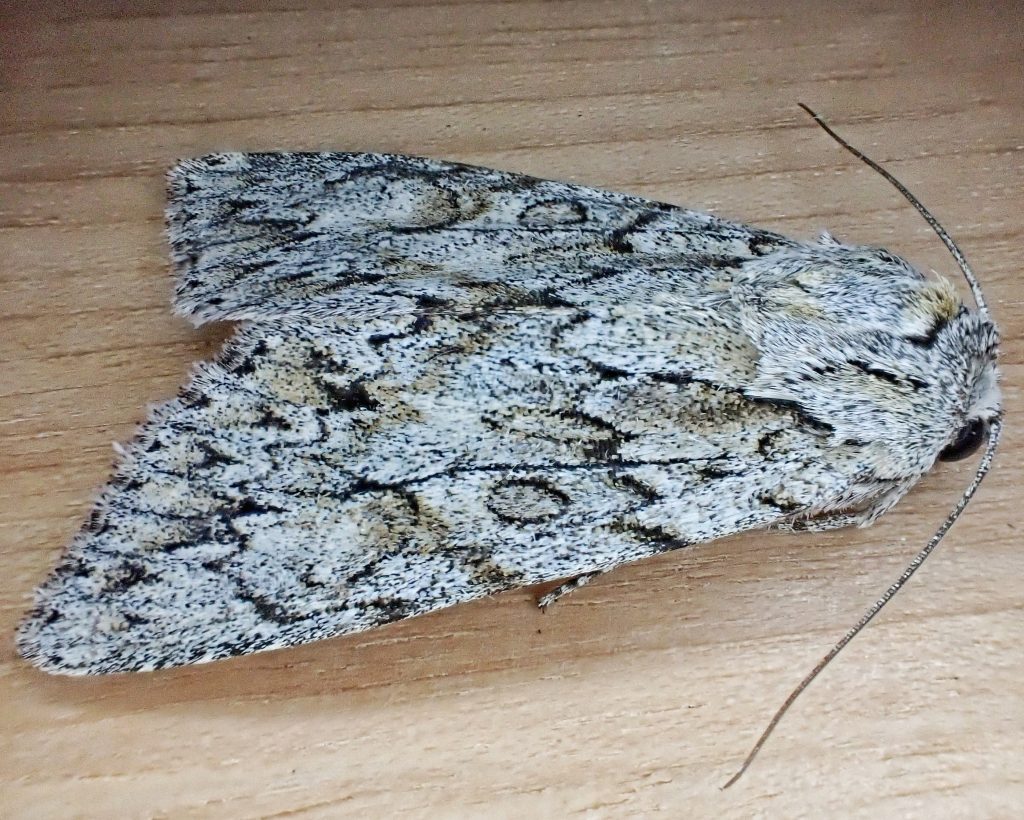
Habitat-Mixed forests containing ocean spray, Pacific ninebark, maples, birches, alders, and other larval hosts.
Range-Northwestern North America; region wide in appropriate habitat.
Adults active-Late June to late September.
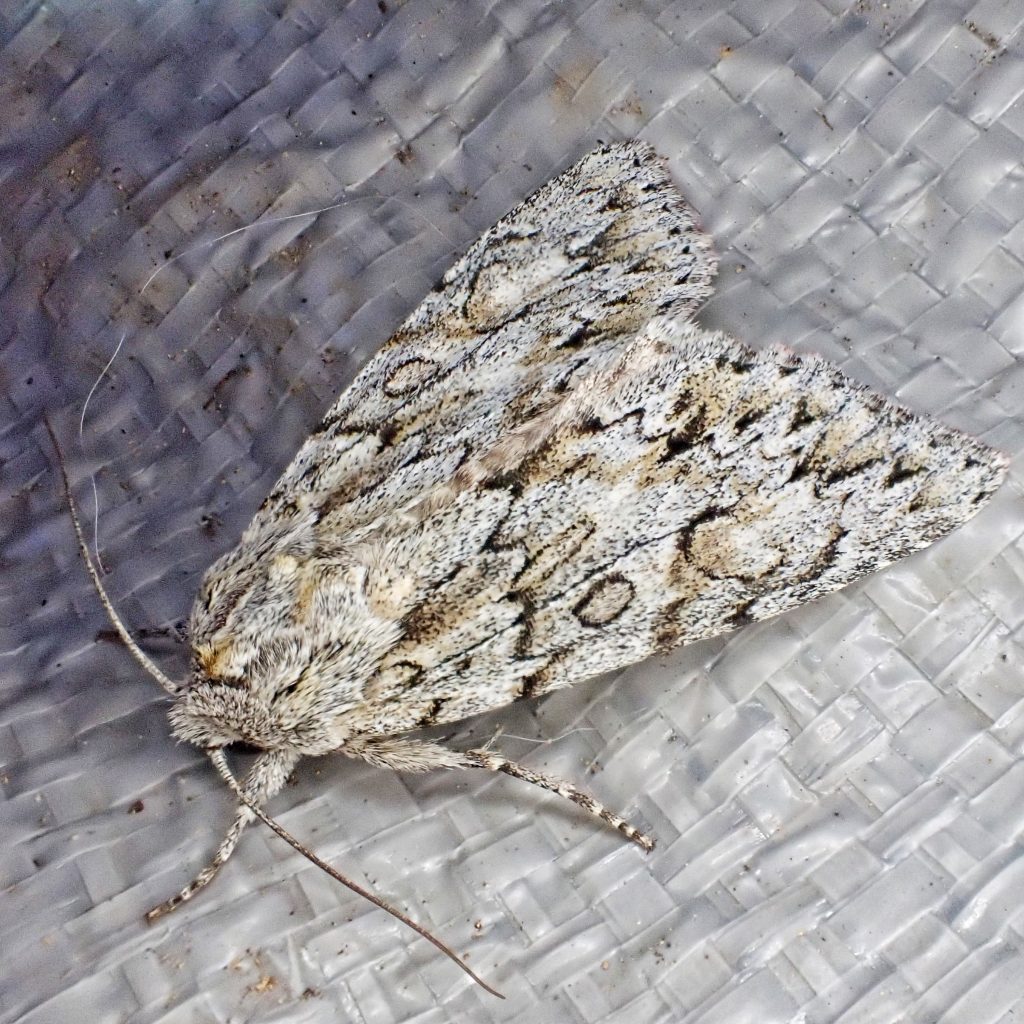
Eats-Larval hosts include ocean spray, Pacific ninebark (and other members of Rosaceae), maples, birches, and especially alders; I can find no information on the feeding habits of adults, though I would guess that they do feed, since I find nothing that says otherwise, and probably consume nectar and tree sap.
Eaten by-Probably insectivores of all classes, with the larvae being vulnerable to gleaning birds.
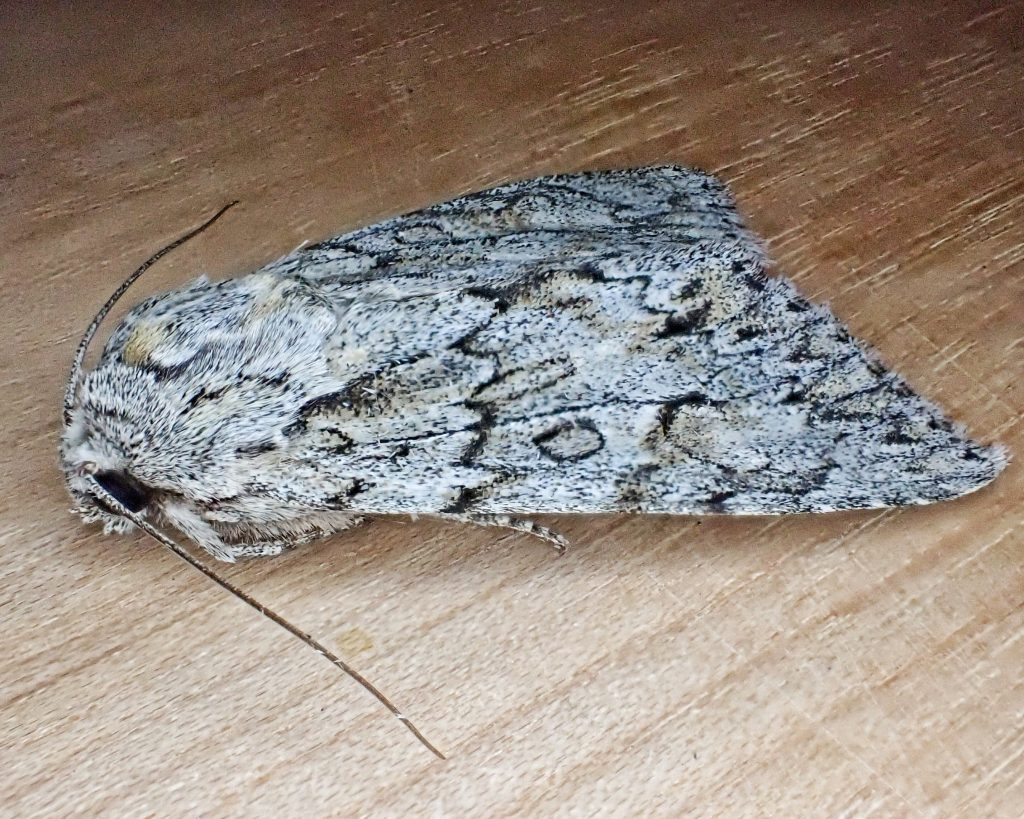
Life cycle– I can’t find corroboration for this, but since there is no spring flight for this species, I would assume that they are univoltine, and overwinter as eggs in diapause, although it’s certainly possible that some eggs hatch in late summer and overwinter as larvae in diapause.
Etymology of names– Andropolia is from the Greek words for ‘man’ and ‘grey’. Polia (meaning ‘grey’) is the genus to which this species was originally assigned, but I don’t know what Grote meant to suggest by adding ‘andro-‘ to it when he later segregated the genera. The specific epithet aedon is the Greek word for ‘nightingale’, but I cannot ascertain what Grote was referring to there, either.
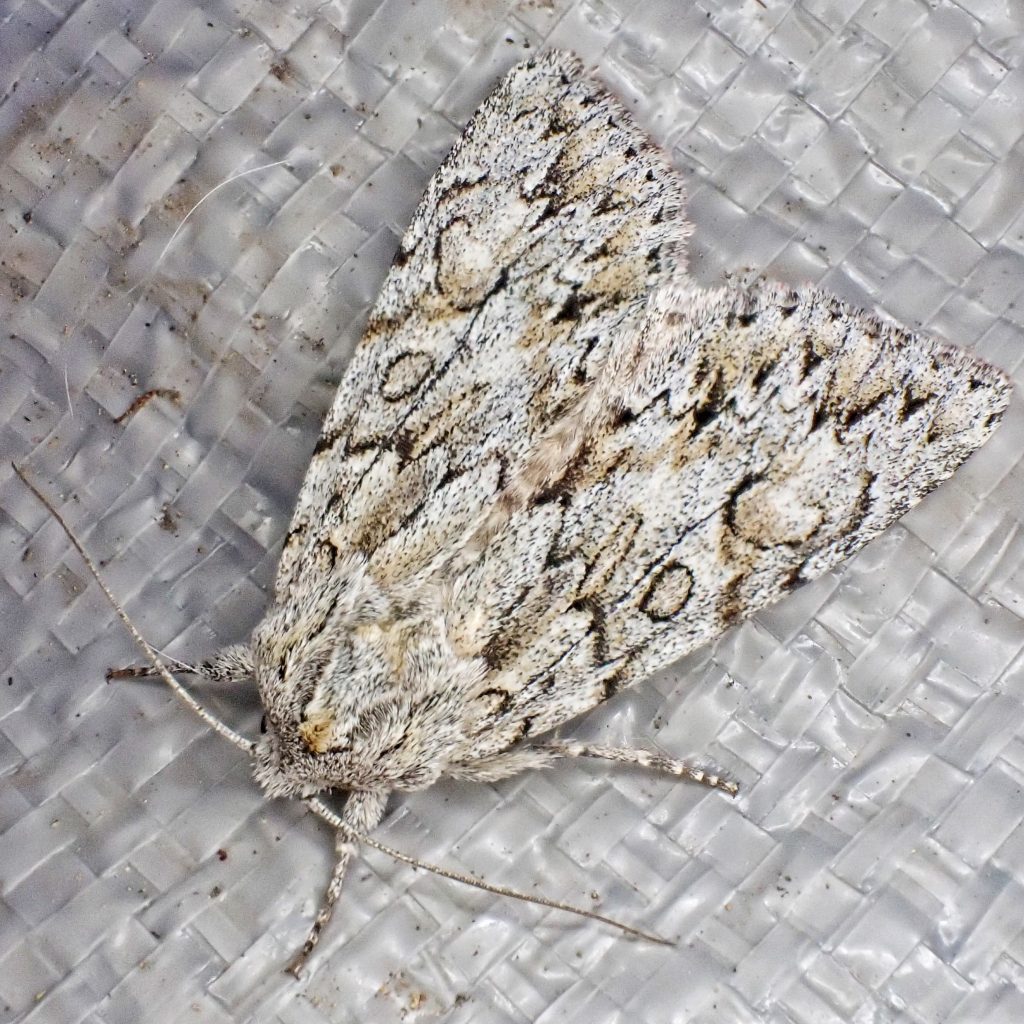
Species Andropolia aedon – Hodges#9570 – BugGuide.Net
Moth Photographers Group – Andropolia aedon – 9570
